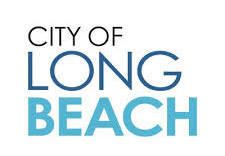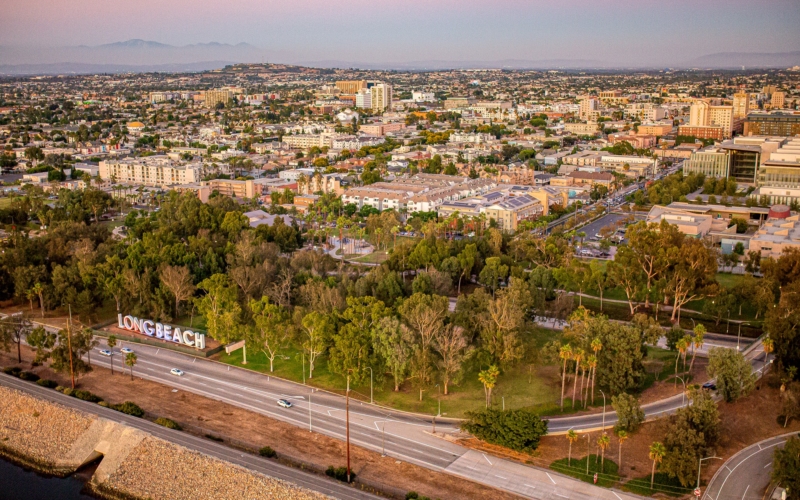 The Long Beach Police Department, Long Beach Fire Department and Department of Disaster Preparedness and Emergency Communications (DPEC) have come together to implement an Integrated Medical Intervention Response (IMR) pilot program. The collaborative program is designed to reduce use of force incidents by providing medical assistance on calls for service involving agitated, combative or violent individuals.
The Long Beach Police Department, Long Beach Fire Department and Department of Disaster Preparedness and Emergency Communications (DPEC) have come together to implement an Integrated Medical Intervention Response (IMR) pilot program. The collaborative program is designed to reduce use of force incidents by providing medical assistance on calls for service involving agitated, combative or violent individuals.
“Our officers periodically come into contact with individuals exhibiting different types of behaviors,” said Police Chief Robert G. Luna. “This innovative and collaborative approach to addressing situations with such individuals is groundbreaking. Already, we’ve leveraged this plan to create a safer environment for our community members and first responders.”
As part of the implementation of the alternative response pilot program, a new radio dispatch code, known as 647V-Intoxicated Person Potentially Violent, was introduced on January 1, 2021. The code initiates a unique dual response of both Long Beach Police Department and Long Beach Fire Department personnel that the City is using for the first time. Additionally, approximately 500 sworn police personnel, 336 firefighters and all 62 dispatchers together completed several coordinated training sessions this past spring as part of the program to learn to better recognize the symptoms of various serious medical conditions.
Individuals encountered by first responders may be under the influence of drugs or alcohol, suffer from mental illness or uncontrolled anger, or a combination of factors. In some cases, unusual behavior may be associated with serious medical conditions.
“The EMS Agency oversees and coordinates medical care of patients treated by 911 responders,” said Department of Health Services, Los Angeles County EMS Agency Director Cathy Chidester. “As such, we are very pleased that Long Beach Police and Fire Departments have chosen to enhance our medical protocols by adding coordinated training and communication techniques to quickly recognize and safely treat the patients experiencing severe agitation. These are very complex and high-risk situations and this enhanced communication and coordination helps to ensure that everyone involved in the response is safe. We are encouraging other departments to adopt this specialized training program.”
While emergency response units are en route to a 647V call, they develop a coordinated plan for de-escalation. Upon arrival, they may need to safely restrain individuals suffering from agitated delirium to minimize stress and injury to the patient and those around them. This agitated state is often the result of alcohol intoxication, the influence of drugs, mental illness, uncontrolled anger or a combination of factors. Paramedics will then perform a medical evaluation. If paramedics determine that the patient requires medical management to ensure their safety and the safety of others, they initiate treatment, which can include a sedative called Midazolam, administered by nasal spray or injection.
“Managing acute medical conditions with medicine is something paramedics do every day and handling patients that are a danger to themselves or others is medically necessary,” said Long Beach Fire Department Medical Director Dr. Tiffany Abramson. “We must adjust the way we respond to these incidents. Once a patient can de-escalate and begin to relax, additional care can be rendered without the use of more invasive techniques that may cause additional harm. Saving lives remains our top priority.”
Oftentimes, when first responders are called to treat an individual experiencing agitated delirium, no sedative is needed. Officers’ first priority is to apply trained de-escalation techniques to diffuse the situation and control the patient so they can be transported to a hospital for evaluation and treatment. Officers are usually successful in achieving this goal without any application of force.
Since the creation of the specific 647V dispatch code in January 2021, an IMR response has been used 137 times; of these incidents, medical intervention using a sedative was used to de-escalate the situation 31% of the time, successfully protecting agitated, combative, or violent individuals from injuring themselves, while also protecting others around them and first responders from injury
“This type of response is imperative in continuing to ensure the health and safety of our community during calls for service,” said Director of Disaster Preparedness and Emergency Communications Reggie Harrison. “Through this response plan, our first responders are more refined in assessing individuals exhibiting severe agitation by quickly identifying physical characteristics as well as physiological and communication cues. Everyone responding to the scene is now better prepared for these situations.”
The coordinated training, communication and medical response techniques in such complex and high-risk situations are helping to ensure that everyone involved in the response is safe, and public safety officials are seeing a notable improvement in the de-escalation of situations that could have resulted in greater conflict.
“A coordinated approach to handling escalating situations in the field is essential,” said Fire Chief Xavier Espino. “We are encouraging other departments across the country to adopt this specialized training program, and they are listening because it works. Rapid intervention during a medical crisis saves lives and leads to better outcomes.”
About the City of Long Beach
Home to approximately 470,000 people, the multiple award-winning and innovative City of Long Beach offers all the world-class amenities of a large metropolitan city while maintaining a strong sense of individual and diverse neighborhoods nestled together along the California coast. As a full-service charter city, Long Beach is home to the Queen Mary, Aquarium of the Pacific, several museums and theaters, a highly-rated school district, Long Beach Airport, the Port of Long Beach, as well as many award-winning City departments such as Health, Parks, Recreation and Marine, Development Services, Public Works and more. The City also has a highly respected university and city college, two historic ranchos, five hospitals, 12 libraries, five golf courses, 169 parks, miles of beaches, marinas, bike paths and a Bike Share program.
For more information about the City of Long Beach, visit longbeach.gov. Watch us on LBTV. Follow us on social to keep up with the latest news: Facebook, Twitter, Instagram and YouTube.





